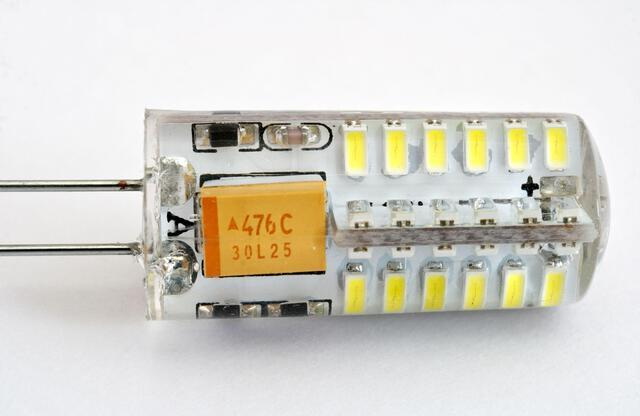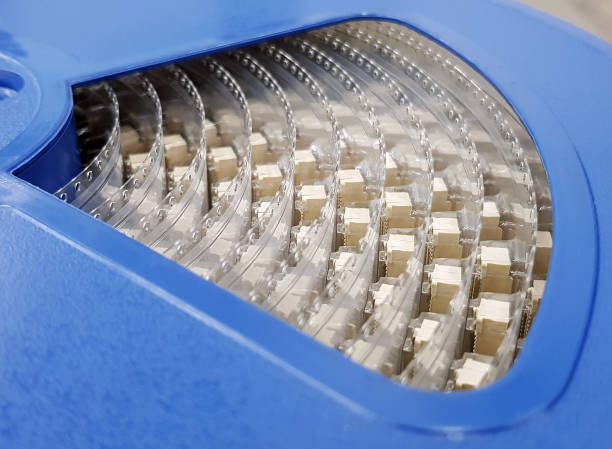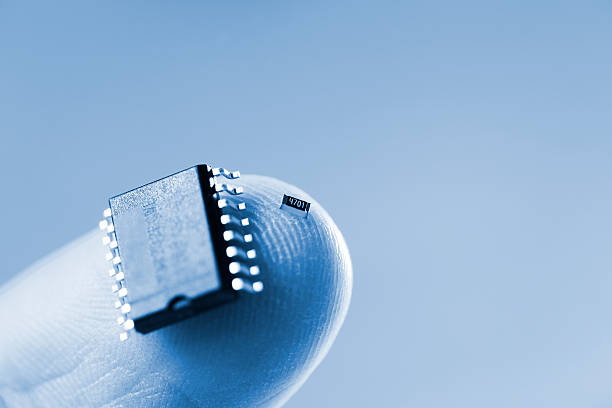Content Menu
● Understanding Surface Mount Technology
● Key Advantages of SMT Components
>> 1. Compact Size and Weight
>> 2. Cost-Effectiveness
>> 3. Higher Production Speeds
>> 4. Design Flexibility
>> 5. Improved Electrical Performance
>> 6. Enhanced Reliability
>> 7. Reduced Assembly Complexity
>> 8. Environmental Benefits
● Applications of SMT Components
● The Evolution of Surface Mount Technology
>> Automation in SMT
>> Integration with Other Technologies
● Challenges Associated with SMT
● Future Trends in Surface Mount Technology
● Conclusion
● FAQ
>> 1. What is Surface Mount Technology (SMT)?
>> 2. Why is SMT preferred over through-hole technology?
>> 3. What industries benefit from using SMT?
>> 4. How does SMT improve electrical performance?
>> 5. Are there any disadvantages to using SMT?
● Citations:
Surface Mount Technology (SMT) has revolutionized the electronics manufacturing industry, enabling the production of smaller, lighter, and more efficient devices. As electronic devices become increasingly miniaturized, the advantages of using SMT components are more pronounced. This article will explore the various benefits of SMT, including its impact on design flexibility, production efficiency, and overall performance in electronic devices.

Understanding Surface Mount Technology
Surface Mount Technology is a method where electronic components are mounted directly onto the surface of printed circuit boards (PCBs). Unlike traditional through-hole technology, which requires components to be inserted into drilled holes, SMT allows for a more streamlined assembly process. This technology has become the preferred choice for modern electronics due to its numerous advantages.
Key Advantages of SMT Components
1. Compact Size and Weight
SMT components are significantly smaller than their through-hole counterparts. This reduction in size allows for higher component density on PCBs, which is essential for designing compact electronic devices like smartphones and wearables. The lightweight nature of SMT components also contributes to the overall reduction in weight of electronic devices, making them more portable.
2. Cost-Effectiveness
The use of SMT can lead to lower production costs. The smaller size of SMT components means fewer materials are needed, and the automated assembly process reduces labor costs. Additionally, the ability to place components on both sides of a PCB further optimizes space and reduces material handling costs.
3. Higher Production Speeds
Automated placement machines used in SMT can place thousands of components per hour, significantly speeding up the manufacturing process compared to manual assembly methods. This efficiency is particularly beneficial for high-volume production runs, where time is critical.
4. Design Flexibility
SMT allows for more complex circuit designs due to its ability to accommodate a variety of component types and sizes. Designers can utilize both sides of a PCB and incorporate fine-pitch components that would be challenging with through-hole technology. This flexibility enables innovative designs that enhance functionality.
5. Improved Electrical Performance
One of the standout advantages of SMT is its ability to improve electrical performance. Shorter lead lengths reduce parasitic inductance and capacitance, which minimizes signal delays and enhances signal integrity. This characteristic is particularly important in high-frequency applications where performance is critical.
6. Enhanced Reliability
The solder joints formed in SMT assemblies tend to be stronger and more reliable than those in through-hole assemblies. The absence of drilled holes reduces mechanical stress on the PCB, leading to improved durability and reliability in various operating conditions.
7. Reduced Assembly Complexity
With fewer manual steps involved in the assembly process, SMT reduces the potential for human error and defects during production. Automated processes ensure consistency and quality across large batches of products.
8. Environmental Benefits
The smaller size and weight of SMT components contribute to reduced material usage and waste during manufacturing. Additionally, the efficiency gained through automation leads to lower energy consumption compared to traditional assembly methods.
Applications of SMT Components
SMT is widely used across various industries due to its numerous advantages:
- Consumer Electronics: Smartphones, tablets, and laptops benefit from compact designs enabled by SMT.
- Automotive Industry: Advanced driver assistance systems (ADAS) rely on high-density circuit boards produced using SMT.
- Telecommunications: High-speed communication devices utilize SMT for improved data transfer rates.
- Medical Devices: Compact medical equipment often employs SMT for portability without sacrificing functionality.
- Industrial Automation: Robotics and control systems leverage SMT for reliable performance in demanding environments.
- Aerospace and Defense: Space-constrained applications require the reliability and miniaturization that SMT offers.

The Evolution of Surface Mount Technology
SMT has evolved significantly since its inception in the 1980s. Initially developed as a solution to meet the demands for smaller electronic devices, it has now become a standard practice in electronics manufacturing worldwide. The integration of automation has played a crucial role in this evolution.
Automation in SMT
With advancements in technology, automation has transformed how SMT is implemented in production lines:
- Robotic Placement Machines: These machines can place components with high precision at incredible speeds, significantly reducing assembly time.
- Automated Soldering Systems: Reflow ovens and selective soldering machines ensure consistent solder joint quality while minimizing defects.
- Inspection Technologies: Automated optical inspection (AOI) systems detect defects early in the production process, ensuring high-quality output.
The combination of these technologies not only enhances efficiency but also improves quality control throughout the manufacturing process.
Integration with Other Technologies
The rise of 3D printing and additive manufacturing has opened new avenues for integrating SMT into advanced electronics design:
- Complex Geometries: 3D printing allows manufacturers to create intricate PCB designs that were previously impossible or cost-prohibitive.
- Customization: Manufacturers can quickly adapt their designs based on market demands without significant retooling costs.
This adaptability is essential in today's fast-paced electronics market, where consumer preferences shift rapidly.
Challenges Associated with SMT
Despite its numerous advantages, there are challenges associated with using Surface Mount Technology:
1. Rework Difficulties: Due to their small size and dense placement on PCBs, reworking or repairing SMT components can be challenging compared to through-hole components.
2. Thermal Sensitivity: Some SMT components may be sensitive to heat during soldering processes; thus careful management during assembly is necessary.
3. Initial Setup Costs: While operational costs may decrease over time due to automation efficiencies, the initial investment required for SMT equipment can be significant.
4. Mechanical Stress Issues: Components subject to frequent mechanical stress may not perform as reliably when solely attached using solder joints typical in SMT assemblies.
Future Trends in Surface Mount Technology
As technology continues to advance, several trends are shaping the future of Surface Mount Technology:
- Miniaturization: The demand for even smaller electronic devices drives innovation in component design and PCB layout.
- 5G Integration: The rollout of 5G technology requires advanced electronic assemblies that leverage the benefits of SMT for high-speed data transmission.
- Sustainability Practices: Manufacturers are increasingly adopting green practices within their production processes to reduce waste and energy consumption.
- Smart Manufacturing Initiatives: The integration of IoT devices into manufacturing processes enables real-time monitoring and optimization, enhancing overall productivity.
Conclusion
The advantages of using Surface Mount Technology components are clear: from compact size and cost-effectiveness to improved electrical performance and reliability, SMT has transformed how electronic devices are designed and manufactured. As technology continues to advance, the importance of these benefits will only grow, making SMT an essential aspect of modern electronics manufacturing.

FAQ
1. What is Surface Mount Technology (SMT)?
Surface Mount Technology (SMT) is a method used to mount electronic components directly onto the surface of printed circuit boards (PCBs), allowing for more compact designs compared to traditional through-hole mounting methods.
2. Why is SMT preferred over through-hole technology?
SMT is preferred because it allows for smaller component sizes, higher component density on PCBs, faster production speeds due to automation, and improved electrical performance with shorter signal paths.
3. What industries benefit from using SMT?
Industries such as consumer electronics, automotive, telecommunications, medical devices, industrial automation, aerospace, and defense benefit significantly from using SMT due to its ability to create compact and efficient designs.
4. How does SMT improve electrical performance?
SMT improves electrical performance by reducing lead lengths between components, which minimizes parasitic inductance and capacitance, leading to faster signal transmission and better overall circuit performance.
5. Are there any disadvantages to using SMT?
While there are many advantages to using SMT, some disadvantages include challenges in rework and repair due to the small size of SMT components, potential thermal sensitivity during soldering processes, initial setup costs being higher than through-hole methods, and potential reliability issues under mechanical stress conditions.
Citations:
[1] https://vectorbluehub.com/smt-assembly
[2] https://emsginc.com/resources/the-evolution-of-surface-mount-technology/
[3] https://www.harwin.com/blog/the-difference-between-tht-and-smt
[4] https://www.hayawin.com/news-characteristics-and-applications-of-smt-manufacturing-technology.html
[5] https://www.mordorintelligence.com/industry-reports/surface-mount-technology-market
[6] https://blog.thedigisource.com/through-hole-smt
[7] https://www.protoexpress.com/blog/good-not-so-good-sides-surface-mount-technology/
[8] https://itbrief.asia/story/smt-market-to-reach-usd-16-8-billion-by-2034-fmi
[9] https://www.mpe-electronics.co.uk/2020/09/08/applications-of-surface-mount-technology
[10] https://www.verifiedmarketreports.com/blog/top-7-trends-in-surface-mount-technology-smt-equipment/




















